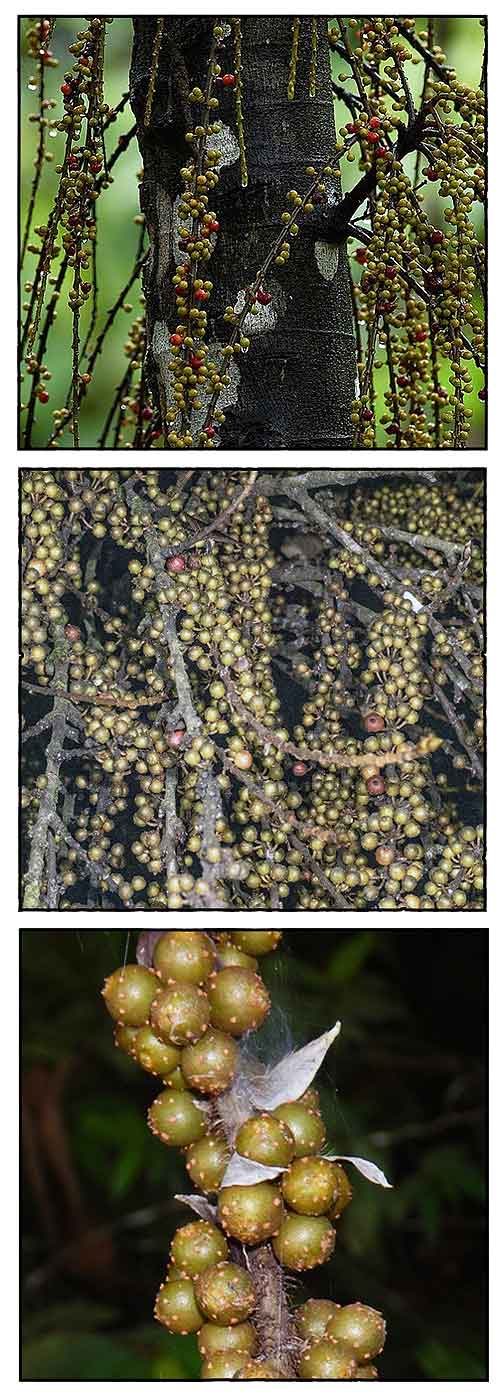
Family • Moraceae
Kalinga balete
Ficus pungens Reinw. ex Blume
KALINGA FIG
xxxxxx
| Scientific names | Common names |
| Ficus kalingaensis Merr. | Kalinga balete (Tag.) |
| Ficus myriocarpa Miq. | Kalinga fig (Engl.) |
| Ficus ovalifolia Ridl. | |
| Ficus petrotica Diels. | |
| Ficus pungens Reinw. ex Blume | |
| Ficus pungens is an accepted species. KEW: Plants of the World Online | |
| Other vernacular names |
| INDONESIA : Gososo (Ternate). |
| PAPUA NEW GUINEA: Baguai (Harigen, Sepik), Wopope (North Solomons Province), Ohohone (Sui, Northern Province). |
• A small to medium-sized tree up to 25 m tall, sometimes with short stilt roots, bark surface finely fissured, grey-brown; leaves arranged spirally, ovate to broadly ovate, 12-45 cm x 8-36 cm, base subcordate to subcuneate, apex with a short tip, margin serrate to denticulate, with 5-10 pairs of lateral veins, variably scabrid on both surfaces, stipules up to 7 cm long; figs on leafless twigs from the trunk and branches, paired, sessile, pyriform, 4-8 mm in diameter, puberulous but glabrescent, ripening red; flowers with 3-4 free tepals, male flowers in 1 row, sessile, with 1 stamen, female flowers sessile or shortly stipitate. (6) Distribution Properties Studies Availability |
July 2025
![]()
 |
| PHOTOS / ILLUSTRATIONS |
| IMAGE SOURCE: Ficus pungens / © Kristof Zyskowski / Some rights reserved / CC BY 4.0 International Deed / Image modified / Click on image or link to go to source page / iNaturalist |
| IMAGE SOURCE: Ficus pungens fruits / © Yanuar Ishaq Dc / Some rights reserved / CC BY-NC-SA / Image modified / Click on image or link to go to source page / iNaturalist |
| IMAGE SOURCE: Ficus pungens fruits / © Chien C Lee / All rrights reserved / Non-commercial use / Image modified / Click on image or link to go to source page / iNaturalist |
Additional
Sources and Suggested Readings |
• |
DOI: It is not uncommon for links on studies/sources to change. Copying and pasting the information on the search window or using the DOI (if available) will often redirect to the new link page. (Citing and Using a (DOI) Digital Object Identifier) |
| List of Understudied Philippine Medicinal Plants |
| New plant names needed The compilation now numbers over 1,500 medicinal plants. While I believe there are hundreds more that can be added to the collection, they are becoming more difficult to find. If you have a plant to suggest for inclusion, native or introduced, please email the info: scientific name (most helpful), local plant name (if known), any known folkloric medicinal use, and, if possible, a photo. Your help will be greatly appreciated. |
• |
 |

 Gen info
Gen info